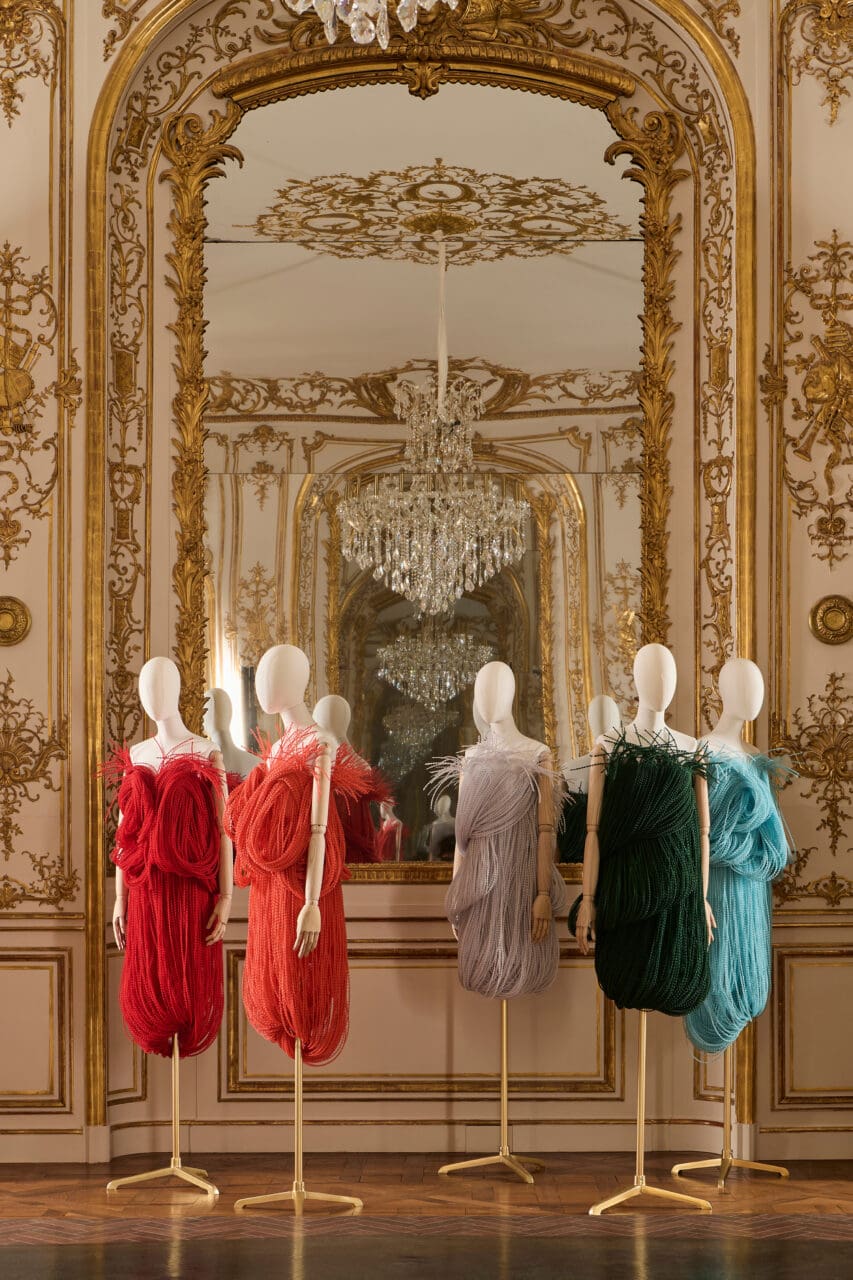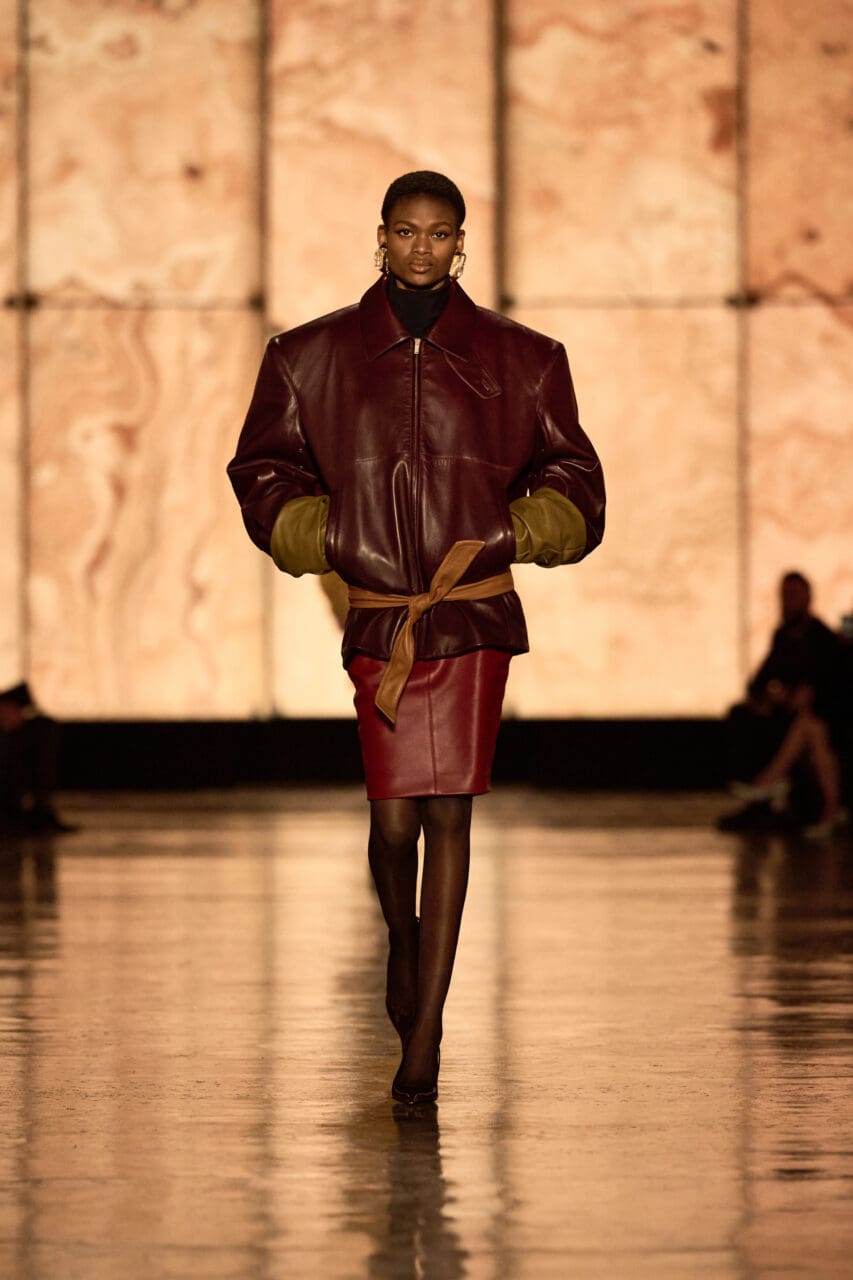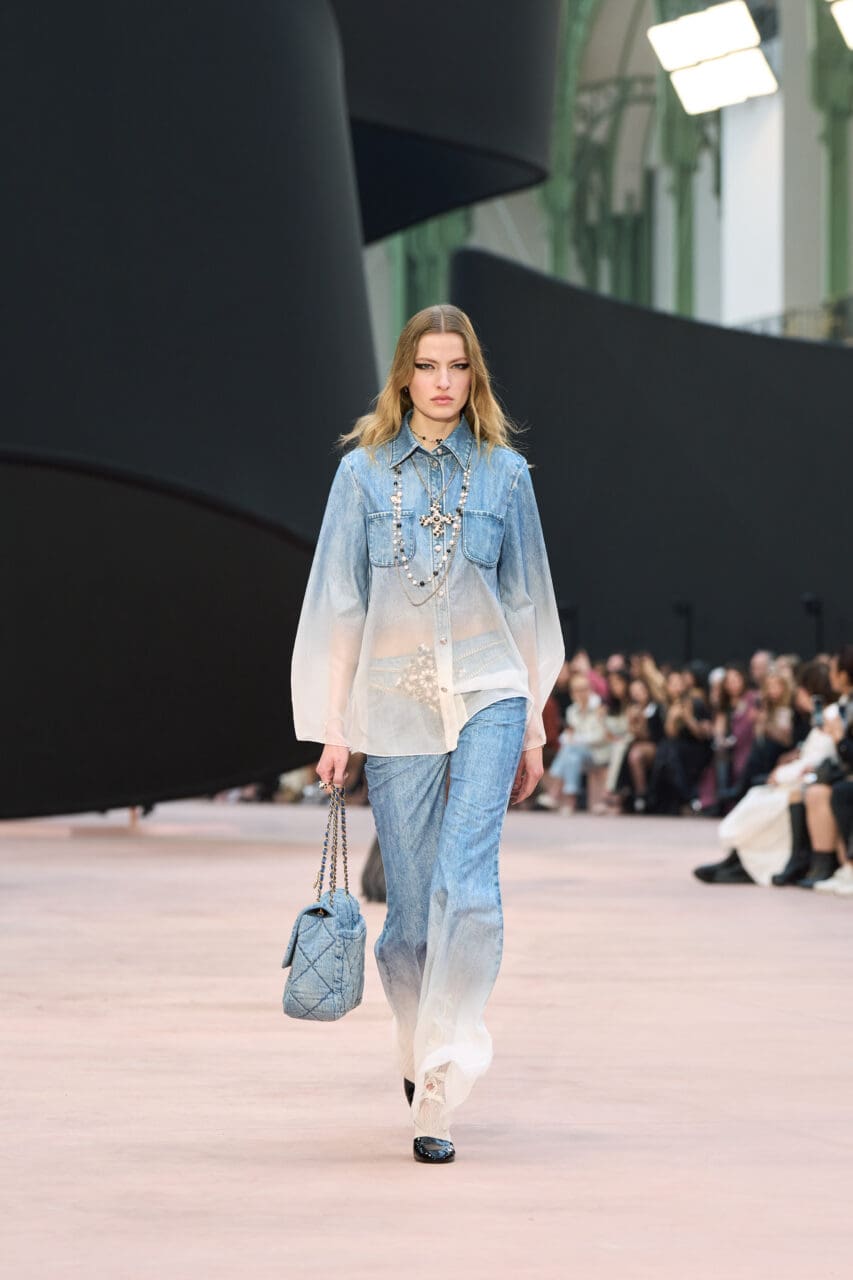“I come from the Netherlands, and we are below sea level,” said Iris van Herpen backstage at her fall 2023 couture show, which explored innovations in aquatic architecture. “It’s something I’ve been thinking about a lot,” she continued, explaining her vision of a—likely near—future that will see humans inhabit both land and oceanic environments.
As enchanting and alluring as Van Herpen’s vision for this aquatic hybridization of humanity is, it does not feel completely fantastical and theoretical. If we are to judge by the state of our ongoing climate emergency, it’s not impossible to consider a future where countries like the Netherlands will be partially submerged in water. But rather than ignore climate change by making more products to send into landfills, as fashion often does, Van Herpen continues to look ahead. What would our new world look like? How will we adapt?
In an effort to engage with these existential queries, Van Herpen looked at future-facing urban architecture. “There’s a new city being built at the moment in South Korea, which is called Oceanix,” the designer said. “It’s an incredible piece of innovation and also natural preservation.” Oceanix is the world’s “first floating city,” and it’s being built as a result of a new wave of waterborne urbanism designed by architect Bjarke Ingels. The city concept includes zero waste and circular systems and considers coastal habitat regeneration. It is expected to be built by 2025.
This radical concept for architecture applies to Van Herpen’s ever-growing obsession with future and innovation. Here, the concepts of fluidity, fragmentation, and shifting patterns from this wave of design came into play in the designer’s couture. “I wanted to bring the structural element of architecture in a very fluid way,” Van Herpen explained. “I wanted the garments to live, move, and breathe.” There were gowns cut close to the body put together with laser cut pieces bonded onto mesh bodices, as is expected chez IVH, and striking exploding garments with fragments protruding in every direction. Most compelling, however, were pieces where Van Herpen merged her knack for innovation with her eye for tradition: Deftly draped liquid-like organza and pleated metallic fabrics moved like ocean waves crashing against her sculptural, but this time malleable, bodices.
Van Herpen found inspiration this season in the way architects employ the concept of bionic architecture—which focuses on designing architecture that exists harmoniously between nature and society—to study the way biological systems respond to stimuli and adapt to their environment. She envisions a world where humans will adapt to changes in our environment, and will live in structures that are equally self-sufficient. Her couture this time around set forth a visual archetype for what our future will look like. But what does this concept look like in action? The visual language is built. The challenge moving forward—for Van Herpen and everyone else—will be to continue to offer practical innovation in the face of forced evolution. Can couture become bionic and self-sufficient? Could our clothes ever respond to changes in our environment the same way our bodies will eventually have to? I have only questions to offer, but hopefully Van Herpen, whose excitement for the future continues to be her greatest gift, will find some answers.
Editor
José Criales-UnzuetaCredit
Lead image: Isidore Montag / Gorunway.com





